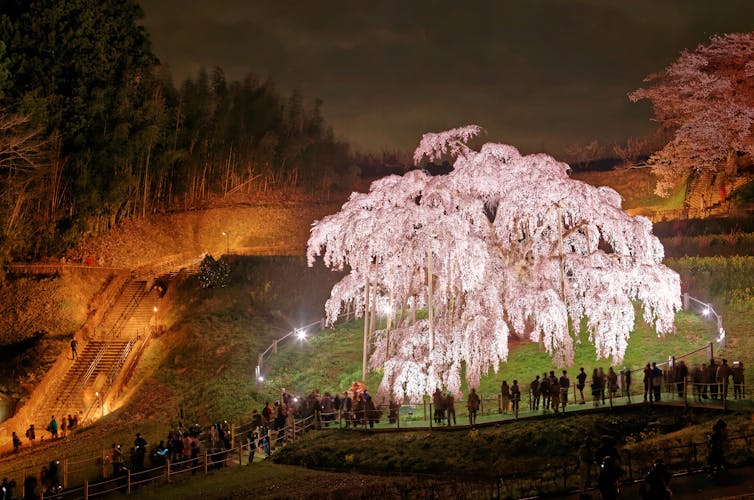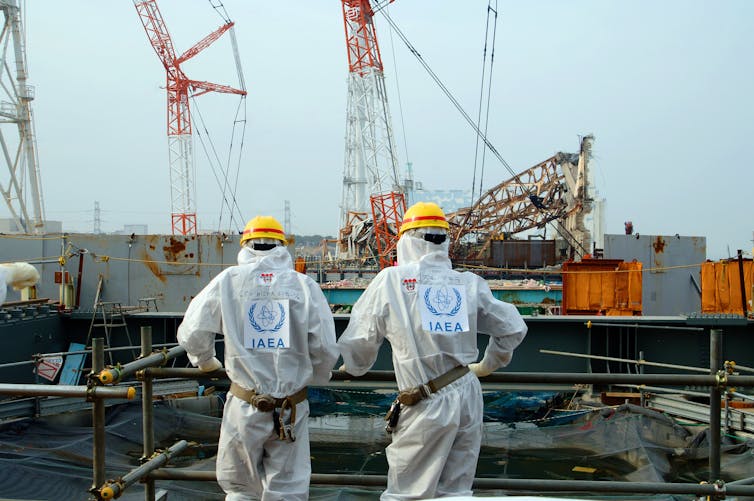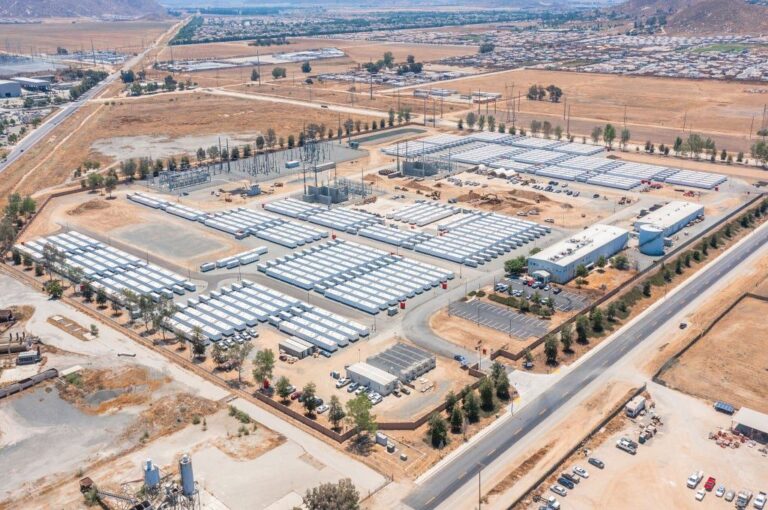
Franck Guarnieri, Mines ParisTech; Aurélien Portelli, Mines ParisTech et Sébastien Travadel, Mines ParisTech
It’s 2019 and for many, the Fukushima Daiichi nuclear disaster has become a distant memory. In the West, the event is considered to be over. Safety standards have been audited and concerns about the sector’s security and viability officially addressed.
Still, the date remains traumatic. It reminds us of our fragility in the face of overpowering natural forces, and those that we unleashed ourselves. A vast area of Japan was contaminated, tens of thousands of people were forced from their homes, businesses closed. The country’s nuclear power plants were temporarily shut down and fossil fuel consumption rose sharply to compensate.
There’s also much work that remains to be done. Dismantling and decontamination will take several decades and many unprecedented challenges remain. Reactors are still being cooled, spent fuel must be removed, radioactive water has to be treated. Radioactivity measurements on site cannot be ignored, and are a cause for concern for the more than 6,000 people working there. Still, the risk of radiation may be secondary given the ongoing risk of earthquakes and tsunamis.
Surprisingly, for many Japanese the disaster has a different connotation – it’s seen as having launched a renaissance.
Rebuilding the world
Our research team became aware of the need to re-evaluate our ideas about the Fukushima Daiichi nuclear disaster during a visit in March 2017. As we toured the site, we discovered a hive of activity – a place where a new relationship between man, nature and technology is being built. The environment is completely artificial: all vegetation has been eradicated and the neighbouring hills are covered by concrete. Yet, at the heart of this otherworldly landscape there are cherry trees – and they were in full bloom. Curious, we asked the engineer who accompanied us why they were still there. His answer was intriguing. The trees will not be removed, even though they block access routes for decontamination equipment.
Cherry trees have many meanings for the Japanese. Since ancient times, they have been associated with 気 (ki, or life force) and, in some sense, reflect the Japanese idea of time as never-ending reinvention. A striking example is that in the West we exhibit objects in museums, permanently excluding them from everyday life. This is happen in Japan. For example, the treasures making up the Shōsō-in collection are only exhibited once each year and the purpose is not to represent the past, but to show that these objects are still in the present. Another illustration is the Museum Meiji-mura, where more than 60 buildings from the Meiji era (1868-1912) have been relocated. The idea of ongoing reinvention is manifested in buildings that have retained their original function: visitors can send a postcard from a 1909 post office or ride on an 1897 steam locomotive.
We can better understand the relationship between this perception of time and events at Fukushima Daiichi by revisiting the origins of the country’s nuclear-power industry. The first facility was a British Magnox reactor, operational from 1966 to 1998. In 1971, construction of the country’s first boiling-water reactor was supervised by the US firm General Electric. These examples illustrate that for Japan, nuclear power is a technology that comes from elsewhere.
When the Tōhoku earthquake and tsunami struck in 2011, Japan’s inability to cope with the unfolding events at the Fukushima Daiichi nuclear power plant stunned the world. Eight years having passed, for the Japanese it is the nation’s soul that must be resuscitated. Not by the rehabilitation of a defective “foreign” object, but by the creation of new, “made in Japan” technologies. Such symbolism not only refers to the work being carried out by the plant’s operator, the Tokyo Electric Power Company (TEPCO), but also reflects Japanese society.

NHK/MCJP
The miraculous cherry tree
Since 2012, the Japanese public media organisation NHK has organised the “Fukushima cherry tree” photo competition to symbolise national reconstruction. Yumiko Nishimoto’s “Sakura Project” has the same ambition. Before the Fukushima disaster, Nishimoto lived in the nearby town of Naraha. Her family was evacuated and she was only able to return in 2013. Once home, she launched a national appeal for donations to plant 20,000 cherry trees along the prefecture’s 200-kilometre coastline. The aim of the 10-year project is simply to restore hope among the population and the “determination to create a community”, Nishimoto has said. The idea captured the country’s imagination and approximately a thousand volunteers turned up to plant the first trees.
More recently, the “Miharu Takizakura” cherry tree has made headlines. More than 1,000 years old and growing in land contaminated by the accident, its presence is seen as a miracle and it attracts tens of thousands of visitors. The same sentiment is embodied in the Olympic torch relay, which will start from Fukushima on March 26, 2020, for a 121-day trip around Japanese prefectures during the cherry-blossom season.
Fukushima, the flipside of Chernobyl?
This distinctly Japanese perception of Fukushima contrasts with its interpretation by the West, and suggests that we re-examine the links between Fukushima and Chernobyl. Many saw the Fukushima disaster as Chernobyl’s twin – another example of the radioactive “evil”, a product of the industrial hubris that had dug the grave of the Soviet Union.
In 1986 the fatally damaged Chernobyl reactor was encased in a sarcophagus and the surrounding area declared a no-go zone. Intended as a temporary structure, in 2017 the sarcophagus was in turn covered by the “New Safe Confinement”, a monumental structure designed to keep the site safe for 100 years. This coffin in a desert continues to terrify a population that is regularly told that it marks the dawn of a new era for safety.

Greg Webb/IAEA, CC BY
At the institutional level, the International Atomic Energy Agency (IAEA) responded to Chernobyl with the concept of “safety culture”. The idea was to resolve, once and for all, the issue of nuclear power plant safety. Here, the Fukushima accident had little impact: Infrastructure was damaged, the lessons learned were incorporated into safety standards, and resolutions were adopted to bring closure. In the end, the disaster was unremarkable – no more than a detour from standard procedures that had been established following Chernobyl. For the IAEA, the case is closed. The same applies to the nuclear sector as a whole, where business has resumed more or less as usual.
To some extent, Japan has fallen in line with these ideas. The country is improving compliance with international regulations and increased its contribution to the IAEA’s work on earthquake response. But this Western idea of linear time is at odds with the country’s own understanding of the disaster’s framework. For many Japanese, events are still unfolding.
While Chernobyl accelerated the collapse of the Soviet Union, Fukushima Daiichi has become a showcase for the Japanese government. The idea of ongoing reinvention extends to the entire region, through a policy of repopulation. Although highly controversial, this approach stands in stark contrast to Chernobyl, which remains isolated and abandoned.
Other differences are seen in the reasons given for the causes of the accident: The IAEA concluded that the event was due to a lack of safety culture – in other words, organisational failings led to a series of unavoidable effects that could have been predicted – while Japanese scientists either drew an analogy with events that occurred during the Second World War, or attributed the accident to the characteristics of the Japanese people.
Before one dismisses such conclusions as irrational, it’s essential to think again about the meaning of the Fukushima disaster.![]()
Franck Guarnieri, Directeur du Centre de recherche sur les risques et les crises, Mines ParisTech; Aurélien Portelli, Chargé d’enseignement recherche en histoire des risques industriels, Mines ParisTech et Sébastien Travadel, Chargé de recherche en ingénierie et sécurité industrielle, Centre de recherche sur les risques et les crises, Mines ParisTech
Cet article est republié à partir de The Conversation sous licence Creative Commons. Lire l’article original.




15 Comments
Pingback: สูทผู้หญิง
Pingback: ซอฟต์แวร์บริหารงานบริการทำความสะอาด
Pingback: Buy Ultima-Primo Tabs 25 - Ultima Pharmaceuticals - US Online
Pingback: Science
Pingback: สล็อตฝากถอน true walltet ไม่มีบัญชีธนาคาร
Pingback: best cams
Pingback: แผ่นพับโบรชัวร์
Pingback: เช่ารถตู้พร้อมคนขับ
Pingback: highbay
Pingback: kc9
Pingback: ปั้มติดตาม
Pingback: ปั้มฟอล
Pingback: หวยรวยทรัพย์ หวยออนไลน์
Pingback: essentials
Pingback: fruit party